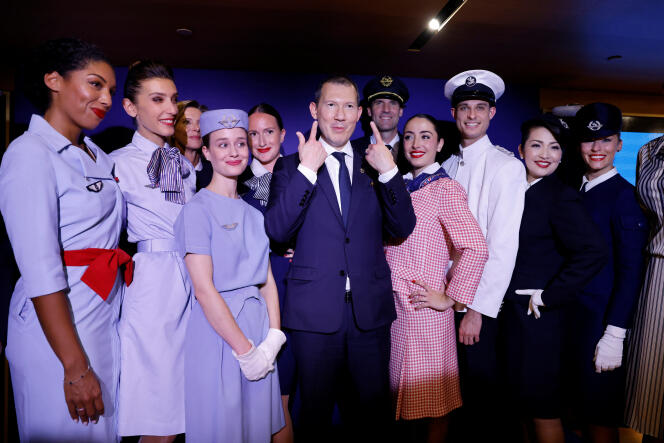Ninety years after its birth, Air France seems in good shape. In any case in much better health than at its creation on October 7, 1933 when Pierre Cot, then Minister of Air, decided to merge four airlines, four lame ducks in difficulty, following the crisis of 1929 , to form what would become Air France.
Today, even the unions agree. “Economically, the company is doing much better than in the last two or three years”, notes Laurent Dahyot, general secretary of the CGT Air France. She will finish “in the green. 2023 is a great year”appreciates Anne Rigail, general director and first woman to manage Air France. In the second quarter, the company generated a positive operating result of 482 million euros. A return to better fortune, a reflection of the “very strong demand on long-haul flights and particularly on the North Atlantic”explains the manager.
Founded in 1933, Air France, and air transport more broadly, only took their current form at the end of the Second World War. Like Renault, Air France became, in 1948, a national company mainly dedicated to long-haul flights. From the 1960s, with the famous uniforms of its flight attendants designed by Marc Bohan of the house of Dior, Air France entered the imagination of the French who flocked to the terraces of Orly on Sundays to see its take off. Caravelle and the Boeing 707.
A vicious cycle of losses
The company eats its white bread. These are its “glorious thirty”, which saw Air France face, from 1963, competition from two rivals, UTA, specializing in flights to Africa, Asia and the Pacific; then, the same year, Air Inter, which will focus its activity on domestic destinations. First UTA then Air Inter would eventually fall into his hands during the 1990s.
The symbol of this prosperous period for the national airline was the launch of the Concorde on January 21, 1976. That day, Air France and British Airways each took off the supersonic. The first from Paris to Rio (Brazil), and the other from London to Bahrain. The commercial operation of the Concorde, which was very fuel-intensive, and which started just after the oil crisis of 1973, was always in deficit. It ended in 2003, three years after the Gonesse accident, which caused 113 victims when the plane shortly after takeoff crashed into a hotel.
You have 69.02% of this article left to read. The rest is reserved for subscribers.
